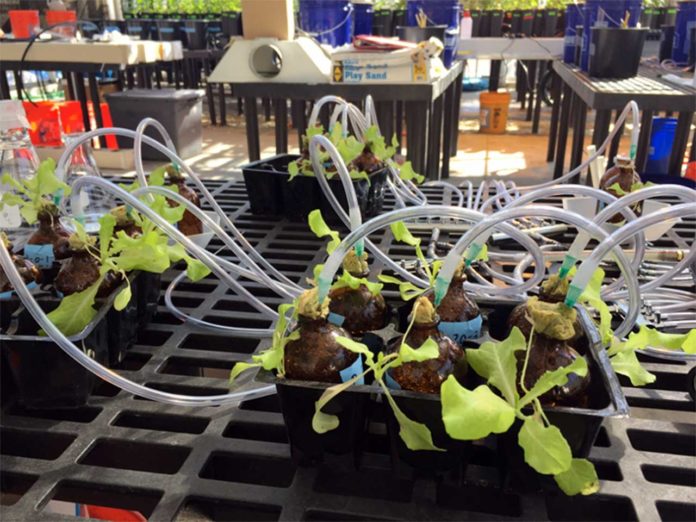Carbon nanotubes (CNTs) are tubes made of carbon with diameters typically measured in nanometers. They are used to make rebar for concrete, sporting goods, wind turbines, and lithium batteries, among others with great potential.
Using carbon nanotubes in a wide range allows them to enter different environments and ecosystems. That’s why understanding how carbon nanotubes behave in these environments is essential to understanding their environmental fate and effects.
In a recent study, scientists from the American Society of Agronomy developed a new way to measure levels of a specific kind of carbon nanotube in plant tissues. To mimic the nanotubes in the environment, scientists grew hydroponic lettuce in the presence of carbon nanotubes. Then they analyzed the lettuce leaves for traces of carbon nanotubes.
Through this method, scientists could detect small amounts of carbon nanotubes in the leaves, stems, and roots of the lettuce plants.
Yang said, “We have developed a method to address the challenging issue of quantifying carbon nanomaterials in the environment. These findings can help guide the sustainable application of carbon nanotubes in natural environments.”
“The challenge in measuring carbon nanotubes in the environment is that they are made of carbon. All living things on Earth – including humans and plants – have carbon as a key building block.”
Carbon nanotubes made of a single sheet of graphene are called single-walled nanotubes. Layering multiple tubes within others yields multi-walled carbon nanotubes.
However, different molecules can be added to nanotubes to change their characteristics. They might dissolve more easily in solvents, for example.
Yang said, “Carbon nanotubes with molecules added on could be used in the fabrication of nanocomposites, biomedicine, and chemical or biological probes.”
In a past study, scientists measured multi-walled carbon nanotubes in plants. But no one had measured if this kind of carbon nanotube with a specific molecule added on gets into plants.
Using a method called programmed thermal analysis, scientists could heat materials in a controlled manner in different environments – say plus or minus oxygen, for example.
Yang said, “How different materials react to being heated in different environments can provide big clues about these materials.”
Using the method, scientists found that they could detect the carbon in the nanotubes. Using these data could also tell apart the carbon in carbon nanotubes from the plants’ carbon.
Yang said, “This is the first study to measure levels of this kind of carbon nanotube in plants using the thermal analysis. That’s crucial for understanding carbon nanotube fate in the environment and estimating potential human exposure.”
Yang is now working on detecting even smaller amounts of carbon nanotubes in the environment.
Journal Reference:
- Valeria Nava et al. Quantification of carboxyl‐functionalized multiwall carbon nanotubes in plant tissues with programmed thermal analysis. DOI: 10.1002/jeq2.20180
